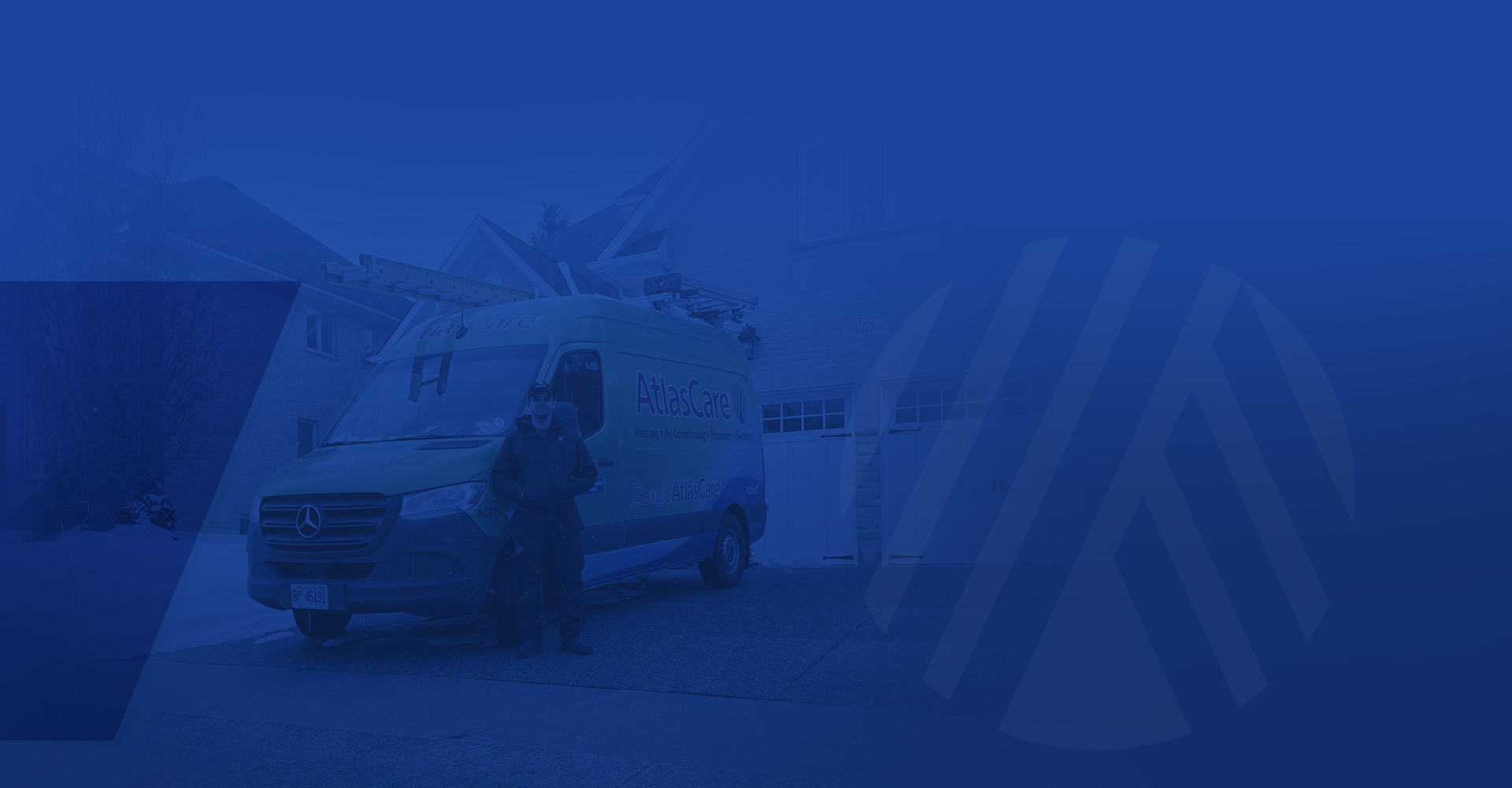A central air conditioner is a significant and long-lasting investment in your home. Knowing what to consider when choosing a central air conditioner is important to ensure you choose a reliable system that fits your home and budget.
Keep these facts in mind as you prepare for a central air conditioner installation in Toronto.
Types of Central Air Conditioner
There are two main types of central air conditioning systems in use in Ontario:
- Split-system central air conditioners consist of an indoor evaporator coil unit inside the ducting and an outdoor compressor unit. The compressor unit sends refrigerant to the evaporator coil, which cools and removes moisture from indoor air as it passes through the ducts.
- Ductless air conditioners distribute cool air through narrow piping instead of large air ducts, which means it can be installed in a house that does not have existing ducting. Some have an outdoor compressor while others are single-package units.
If a home already has a furnace, it is possible to modify the existing air ducts to accommodate central air conditioning. However, the scope of this project will vary depending on the size and location of the current ducting. It may be necessary to resize, reseal, or replace all or part of the ducts.
Ductless air conditioners are an alternative for homeowners who do not wish to undertake the often-extensive renovations necessary to add air ducts to an existing home. For heritage homes with small attics, ductless air conditioners are the most discrete way to add central air conditioning.
When shopping for air conditioning installation in Toronto, be sure the installer inspects the home to ensure the existing air ducts are properly sized and have sufficient supply registers for central air conditioning.
Sizing a Central Air Conditioner
When choosing what size air conditioner to buy, there are two terms you should know: cooling capacity and cooling load.
- Cooling capacity is what people mean when discussing an air conditioner’s ‘size’. Cooling capacity is an air conditioner’s ability to remove heat. It is measured either in British thermal units per hour (Btu/hr) or in tons (one ton is equal to 12,000 Btu/hr).
- Cooling load is the amount of heat that builds up in a space when there is no cooling system.
An air conditioner should have sufficient cooling capacity to meet a home’s cooling load. If the unit is too large, it will short-cycle, meaning it will cool the air too quickly and shut off before it has had a chance to de-humidify. The result is a damp, uncomfortable home.
There is no rule of thumb for choosing the right size air conditioner to buy. Whoever you hire for air conditioner installation in Toronto should calculate the home’s cooling load using reliable methods like that developed by the CSA.
You should also know that a house’s cooling load can change. If the home has had more insulation or energy-efficient windows installed since the air conditioner was last replaced, its cooling load may be smaller. On the other hand, if the house has a new addition, the cooling load will have increased.
Noise Level
Does your city or town have by-laws limiting the noise level allowable for outdoor compressor units? Some municipalities in Ontario do. Most energy-efficient air conditioners have low sound ratings, but the noise level varies between different models.
Efficiency
For central air conditioners, efficiency means the amount of cooling a system can provide per watt of electricity it consumes. The seasonal energy-efficiency rating or SEER expresses an air conditioner’s efficiency over a typical cooling season (where the average outdoor temperature is 28°C). The higher the SEER, the less it costs to run the air conditioner.
Thanks to technological improvements like efficient compressors, more effective heat exchangers, and better refrigerant flow, today’s top-performance air conditioners are more than twice as efficient as those from just a decade ago. A 10-year-old air conditioner has a typical SEER of 7.0 to 8.0, while high-efficiency air conditioners can now reach a SEER as high as 17.0.
In Canada, an ENERGY STAR® qualified split central air conditioner must have a SEER rating of at least 13.0.
Electrical Load
An often-forgotten consideration when choosing a central air conditioner is electricity. Depending on the home’s current capacity, it may be necessary to upgrade the electrical service to accommodate the increased electrical load of a central air conditioner. This is another consideration an installer should be aware of and check before advising on which central air conditioner to buy.
Cost of Air Conditioner Installation Toronto
The cost of air conditioner installation will change depending on several factors, including:
- Cooling load
Large or inefficient homes require a more powerful central air conditioner to meet the larger demand for cooling. Typically, the cost of installing an air conditioner increases with cooling load. - Air ducts
If the home already has ducts, it may be necessary to modify them for central air conditioning. Adding new ductwork to a home that does not have ducts is often a costly and time-consuming renovation. - Electrical load
Upgrading the electrical service to deal with the electrical load of central air conditioning will add additional costs to installation.
A reliable installer will always provide a free quote for air conditioner installation.






